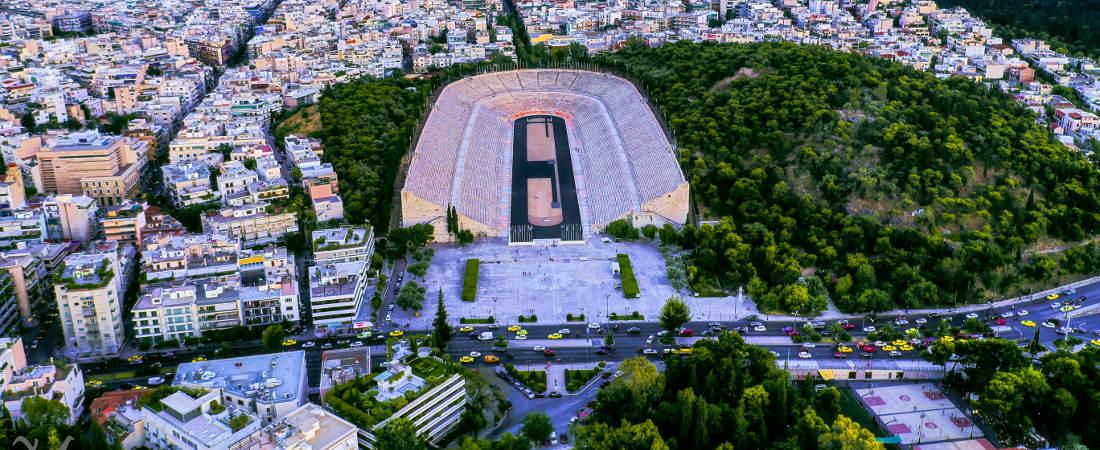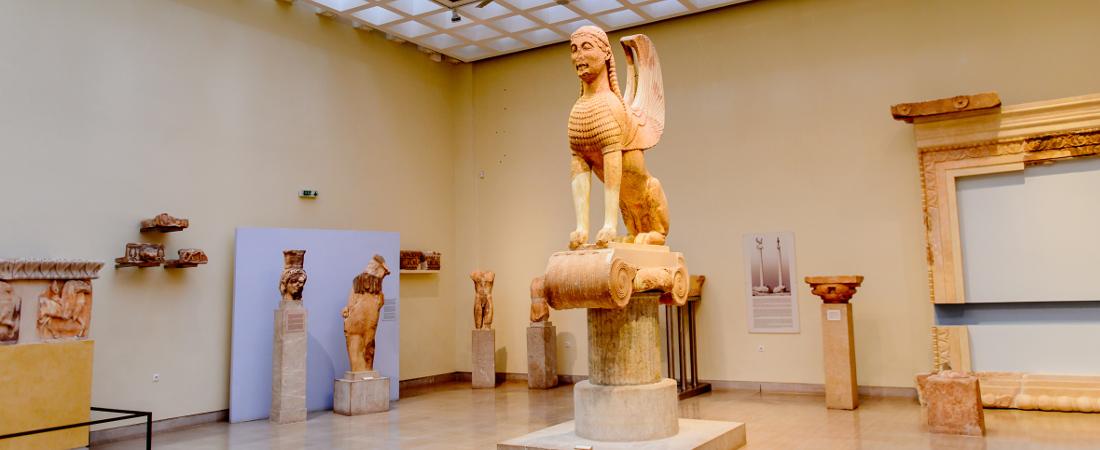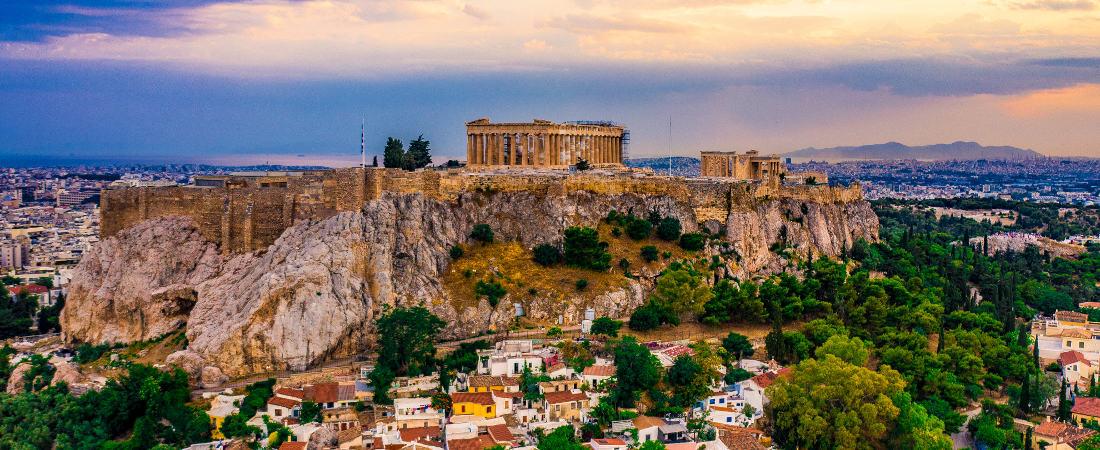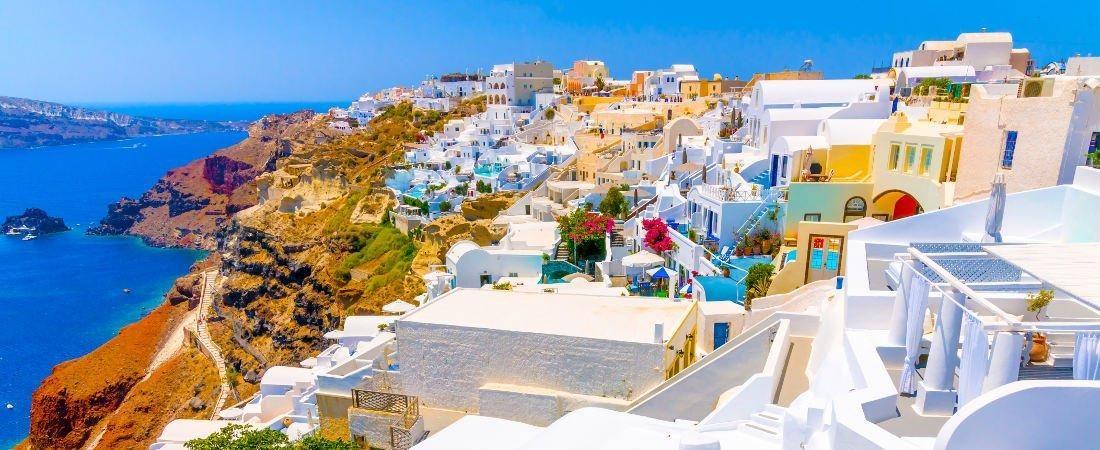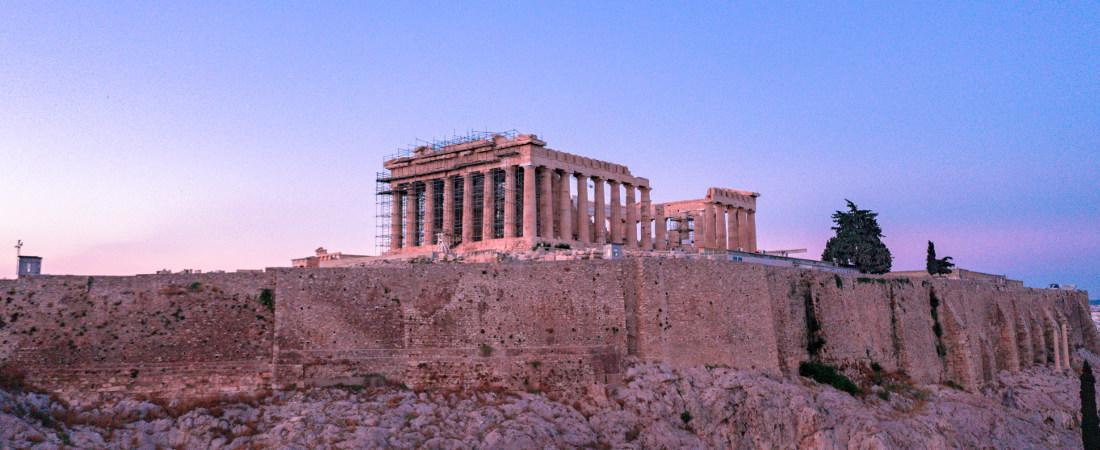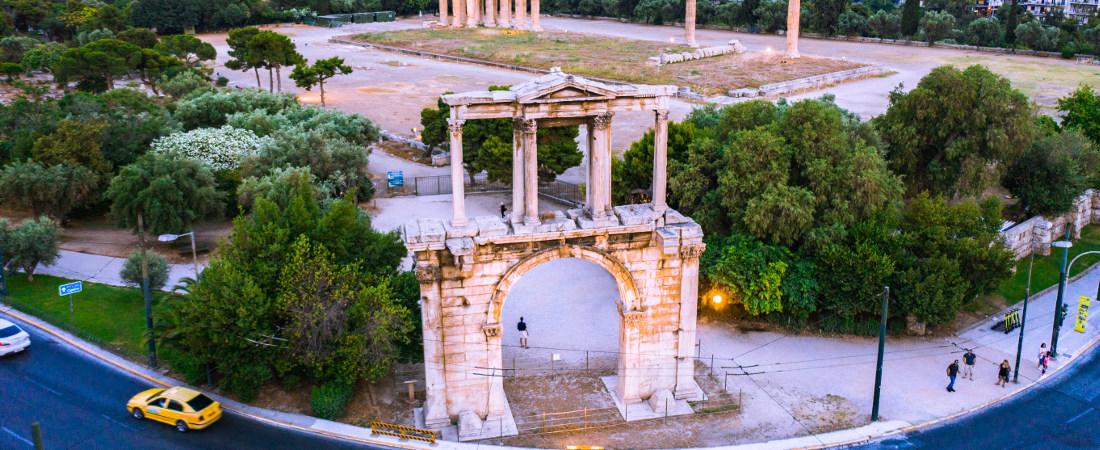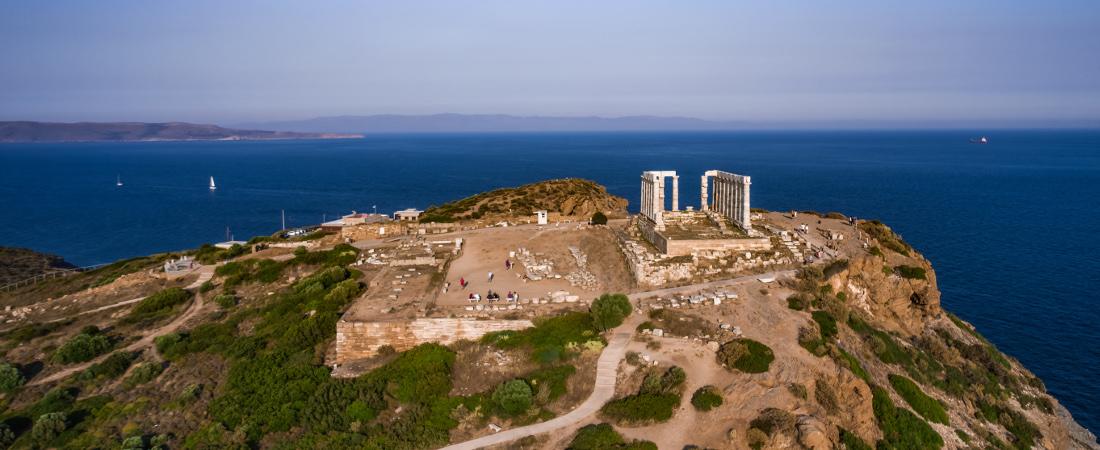Cape Sounion
Cape Sounion is a promontory located 69 km by road from Athens City, at the southernmost tip of the Attica peninsula in Greece. It is noted as the site of ruins of the Ancient Greek Temple of God Poseidon, the God of the Sea in classical mythology. The remains are perched on the headland, surrounded on three sides by the sea. Furthermore, the ruins bear the deeply engraved name of English Romantic poet Lord Byron (1788 – 1824).
History and Legend
According to legend, Cape Sounion is the spot where Aegeus, King of Athens City, leaped to his death off the cliff, thus giving his name to the Aegean Sea. The story goes that Aegeus, anxiously looking out from Sounion, despaired when he saw a black sail on his son Theseus’s ship, returning from Crete. This led him to believe that his son had been killed in his contest with the dreaded Minotaur, a monster that was half man and half bull.
King Minos of Crete confined The Minotaur in a specially designed labyrinth. Every year, the Athenians were forced to send 7 boys and 7 girls to Minos as a tribute. These youths were placed in the labyrinth to be devoured by the Minotaur. Theseus volunteered to go with the third tribute, to attempt to slay the beast. Beforehand, he had agreed with his father that if he survived the contest, he would hoist a white sail. Theseus had overcome and slain the Minotaur, but tragically had simply forgotten about the white sail.
The earliest literary reference to Cape Sounion is in Homer’s poem “The Odyssey”, probably composed in the 8th century B.C. This recounts the mythical tribulations suffered by the Greek hero Odysseus in a grueling 10-year sea voyage to return to his native island, Ithaca in the Ionian Sea, from the sack of Troy. As a matter of “fact”, this ordeal was supposedly inflicted upon him by God Poseidon, to whom the temple at Cape Sounion was dedicated.
Origin of the name “Sounion”
The Story goes that various Greek commanders sailed back from Troy, and the helmsman of King Menelaos of Sparta’s ship died at his post while rounding “Holy Sounion, Cape of Athens”. King Menelaos landed at Cape Sounion to give his companion full funeral honors (i.e. cremation on a funeral pyre on the beach). However, the storm caught the Greek ships off Cape Malea and scattered them in all directions.
Findings
Archaeological finds on the site date from as early as 700 B.C. Herodotus tells us that in the sixth century B.C., the Athenians celebrated a quadrennial festival at Sounion, which involved Athens’ leaders sailing to the cape in a sacred boat.
In the 7th century B.C., developments in Attic art led to the erection of monumental kouroi both in local sanctuaries and over the tombs of the wealthy. During this time, the Laurion silver mines, located just to the north of Sounion, provided Athens with much wealth. Cape Sounion was a borough of Attica, and it originally belonged to the tribe Leontis. Sounion became part of the tribe Attalis after 200 B.C.
The temple’s construction
The Sanctuary of Cape Sounion, with its strong fortress, was directly connected with the metal-bearing region of Lavreotiki. In the mountain at Lavrion are preserved many ancient mining installations, and there are marble quarries in the area of Agrileza, which supplied the material for the Temple of Poseidon.
Political importance
As a result, the history of Cape Sounion and its political and social achievements were very closely tied to those of Athens City. Because of its proximity to the mines, Cape Sounion at times became a major slave market. Some authorities theorize that slaves who obtained their freedom after years of working in the mines stayed in Cape Sounion and eventually became citizens.
Historic Highlights after the 4th century
The original, Archaic Period Temple of Poseidon on the site was built of tufa (limestone). It was probably destroyed in 480 B.C. by Persian troops during Xerxes I ‘s invasion of Greece (the second Greco-Persian War). Although there is no direct evidence for Cape Sounion, Xerxes certainly had the Temple of Goddess Athena, and everything else, on the Acropolis of Athens, razed as punishment for the Athenians’ defiance.
After they defeated Xerxes in the naval Battle of Salamis, the Athenians placed an entire enemy trireme (warship with three banks of oars) at Cape Sounion as a trophy dedicated to God Poseidon.
The later Temple at Cape Sounion, whose columns still stand today, was probably built in ca. 440 B.C. This was during the ascendancy of Athenian statesman Pericles, who also rebuilt The Parthenon of The Acropolis of Athens.
The Peloponnesian War
In 413 B.C., during the Peloponnesian War against the Spartans, the Athenians fortified the site with a wall and towers, to prevent it from falling into Spartan hands. This would have threatened Athens’ seaborne grain supply route from Euboea. Athens’ supply situation had become critical. Especially since the Spartan fortification of Deceleia, in north Attica, cut the city’s land supply – lines. However, not long after, Athenians seized the Cape Sounion fortress by a force of rebel slaves from the nearby silver mines of Laurium.
Cape Sounion and the Temple of Poseidon are part of our frequent Afternoon tour.






















